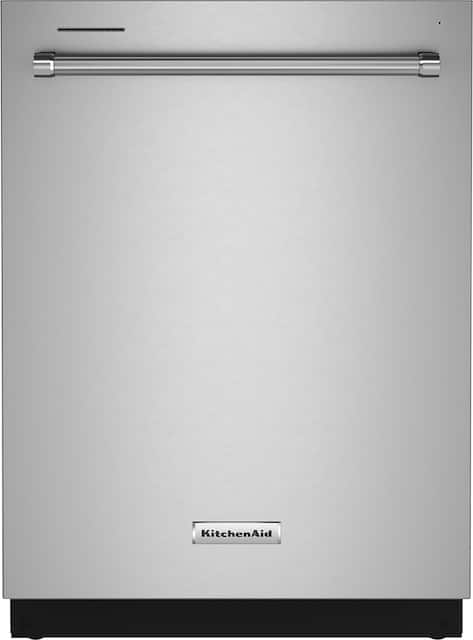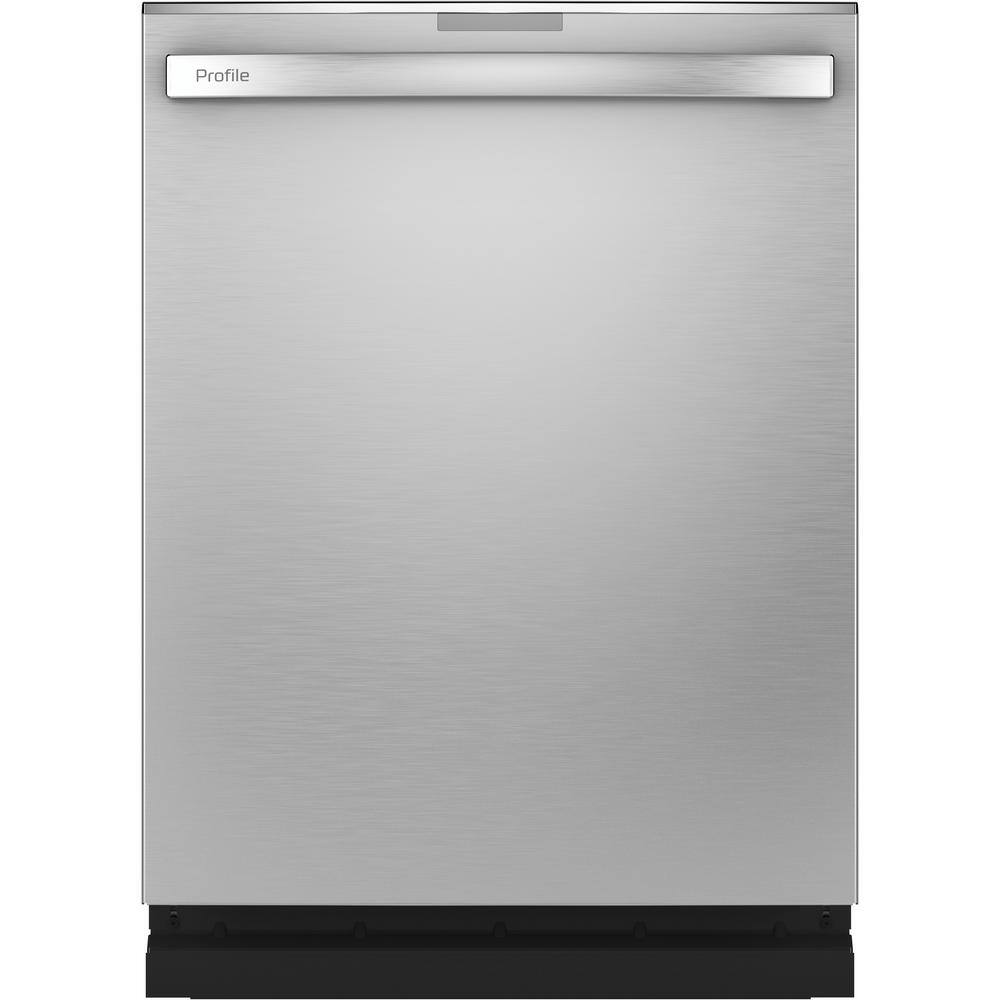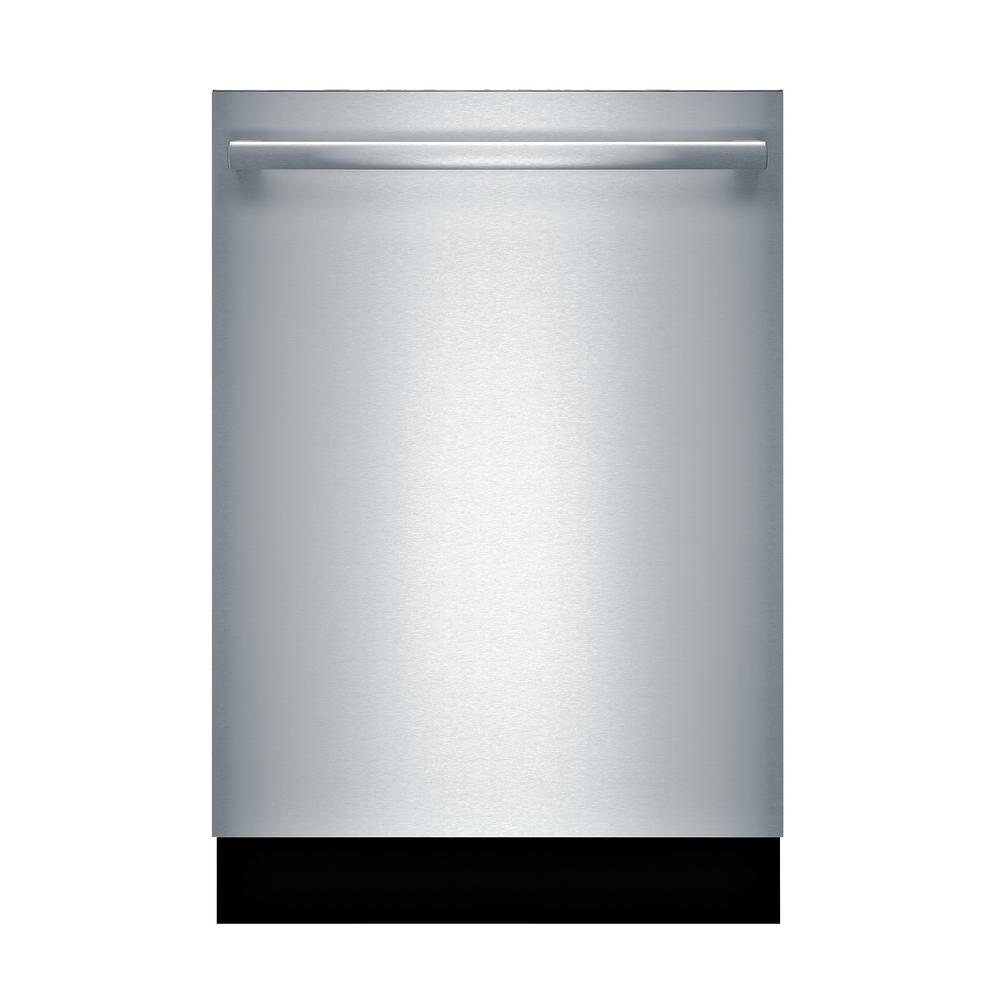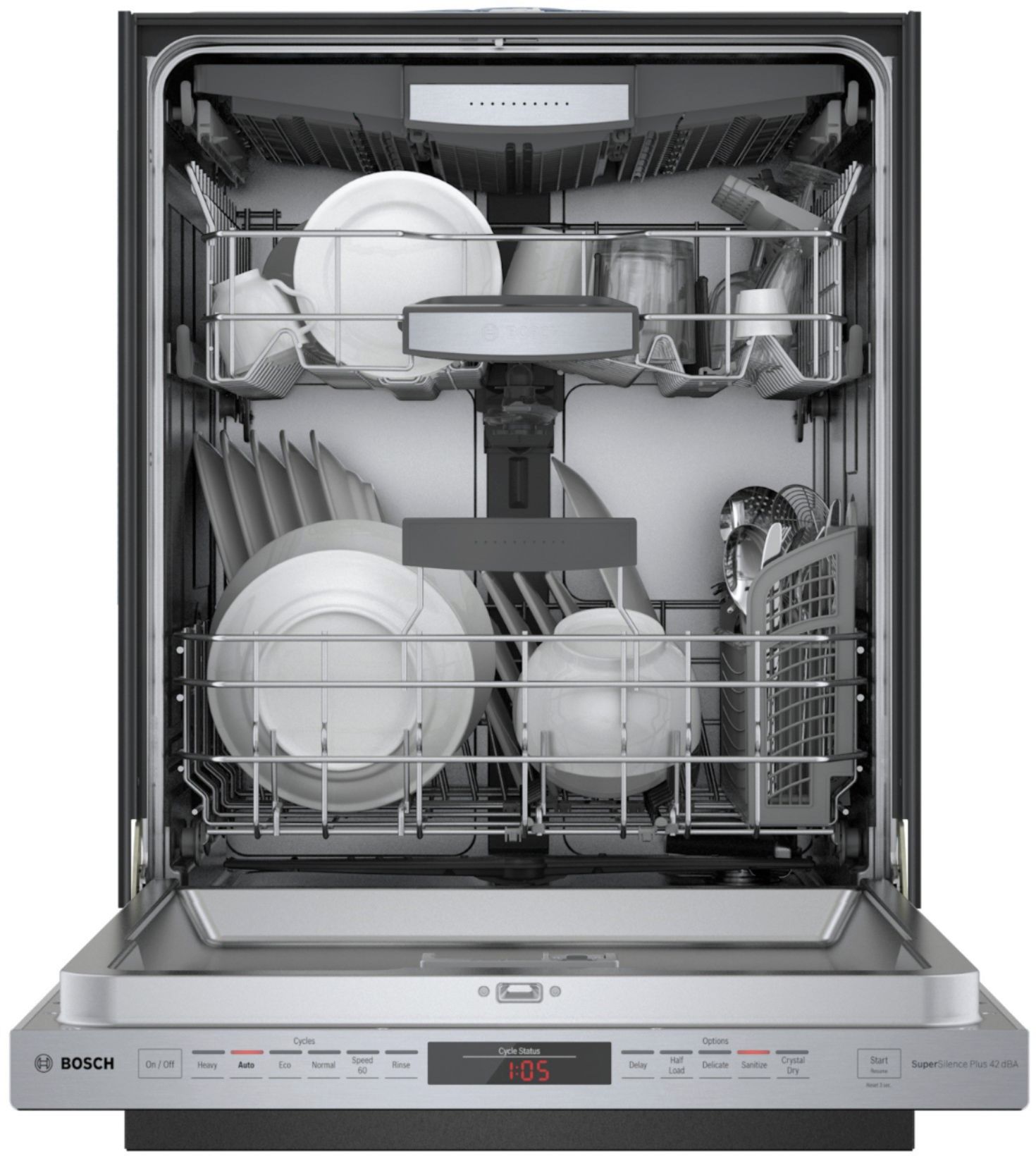FreeFlex™ third rack
The large third rack has a deep, angled design that fits 6″ glasses, mugs, and bowls.
It features rotating wash jets to clean items in the rack, a drying bar with tabs that help wick moisture off glasses, and a removable utensil tray for cooking tools. (Among leading brands based on usable volume.)
44dBA
Provides quiet cleaning without compromising performance, so there’s no need to wait to run a wash cycle while entertaining and enjoying meals, even in open-concept kitchens.
Advanced clean-water wash system
Uses microfiltration to continuously remove food particles during the wash and rinse cycles and circulates clean water to dishes in all three racks. This allows dirty cookware and delicate glassware to be washed together in the same load.
ProWash™ cycle
Uses sensors to measure soil levels throughout the cycle and adapts wash time and water temperature as needed for tough messes or lighter loads because no two meals or the dishes that result are exactly the same.
PrintShield™ finish
Resists smudges and fingerprints. The specialized coating for stainless steel is easy to clean with just water and a soft cloth, so you can spend more time cooking and less time cleaning up the kitchen.
Adjustable middle rack
Adds flexibility to fit tall items, such as a stand mixer bowl. Lower the rack to place large dishes inside, or raise it to make room for platters, pitchers, blender jars and more in the rack below.
Durable stainless steel interior
Offers the beauty and benefits of stainless steel inside the dishwasher. It resists streaks, stains, and odors while retaining heat to help improve drying.
SatinGlide® Max Rails in third and middle racks
Allow racks to move effortlessly, even when fully loaded.
Adjustable rows in middle and lower racks
Fold down to make room for dishes in a variety of shapes and sizes, such as roasting pans, serving bowls, colanders, and Dutch ovens.
Two stemware holders in middle rack
Secure wine glasses along the side of the rack to prevent them from moving around during the wash cycle.
Express wash cycle
Cleans in less time, so you always have the dishes you need while prepping, cooking, and entertaining.
Sani Rinse option
Eliminates most food soil bacteria
Top controls
The controls are tucked away on top of the dishwasher door for a clean look to match your kitchen style. An indicator light on the front of the door changes colors to subtly display cycle progress.
Dishwasher hookup kit is sold separately and is not included.
Required for installation:
All dishwasher purchases require a dishwasher hookup kit be purchased from Best Buy. Without a hookup kit, your installation will not be completed. Find a hookup kit in the accessories section on this page.






by Luver
I love this dishwasher! It is so quiet and cleans my dishes really well. The 3rd rack is great for large utensils & knives.
by Budbaum
Very quiet, dishes come out very clean. Also lots of room plus a third rack.
by Reau
We installed this after having fisher & paykel dishwasher drawers. We are so much happier this this washer. It can remove tough food and even has an express cycle. I am very happy with this purchase and installation was easy with instructions being easy to read and informative.
by Abe
Great purchase!. The sales person was very helpful & machine worked great!
by Dennis
Really liked that it leaves my plates super clean I had a Samsung and with that dishwasher I had to rinse my plates, but I no longer need to do that definitely recommend it.
by Comy
We love the dishwasher. It cleans great. It dries completely.
by Reme
Excellent product at it’s price point. Would highly recommend.